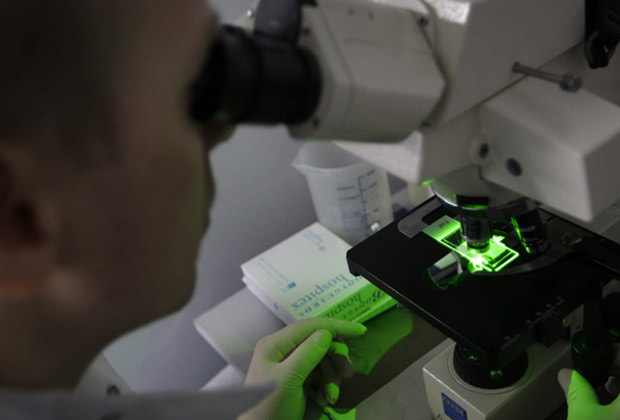WASHINGTON – Federal regulators want to hear from companies using tiny, engineered micro-particles in their products, part of an effort to stay abreast of the growing field of nanotechnology.

The Food and Drug Administration issued final recommendations Tuesday for companies using nanotechnology in products regulated by the government, which can include medical therapies, food and cosmetics. FDA regulators want companies to consult with them before launching nanotechnology products, though the decision whether to go to market will essentially rest with manufacturers.
The FDA doesn’t make a judgment call on the overall safety of nanotechnology or even define the term.
READ MORE: The 41 most nutrient-dense fruits and vegetables
“We are taking a prudent scientific approach to assess each product on its own merits and are not making broad, general assumptions about the safety of nanotechnology products,” said FDA Commissioner Margaret Hamburg, in a statement.
Industry groups generally define nanoparticles as those less than 100 nanometers wide. A nanometer is one billionth of a meter. A human hair, for example, is 80,000 nanometers thick, while a sheet of paper is 100,000 nanometers.

Get weekly health news
These submicroscopic particles have been increasingly showing up in FDA-regulated products, including food packaging, sunscreens, skin lotions and glare-reducing eyeglass coatings. The technology also has potential uses in medicine, though the new FDA documents focus specifically on food and cosmetics.
READ MORE: What’s the best way to cook vegetables? Steaming, study says
- Ontario influenza ICU admissions up 127% in past week, hospital association warns
- 3 kids die from influenza A-related complications since start of December in Ontario
- Hanukkah begins this weekend. What to know and how it’s celebrated
- Almost 200 children conceived from sperm donor with cancer-causing gene
The guidelines for food makers suggest any manufacturing changes involving nanoparticles could require submitting additional data to show that the changes don’t affect the safety or identity of the food. Under longstanding regulations, food companies aren’t required to seek regulatory approval for products containing established ingredients and materials, such as caffeine, spices and various preservatives.
But the FDA states that “at this time, we are not aware of any food substances intentionally engineered on the nanometer scale” that would qualify for that category of “generally recognized as safe” additives.
Food companies are studying nanoparticle coatings as a form of preservation and as a way to potentially reduce bacterial contamination in certain foods.
READ MORE: Some of the worst foods for your heart’s health
In a separate guidance document, the FDA laid out suggestions for the use of nanotechnology in cosmetics, a common practice in the cosmetics industry since the 1990s. Nanoparticles are used in skin moisturizers, mineral makeup and other cosmetics.
The guidance encourages manufacturers to consult with FDA before testing the safety of nanoparticles used in cosmetics, noting that traditional testing methods may not pick up changes produced by adding nanotechnology.
The FDA generally has less authority over cosmetics than food ingredients. The FDA does not typically review cosmetics before they launch, and companies are responsible for assuring the safety of their products.







Comments